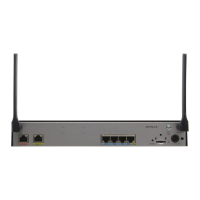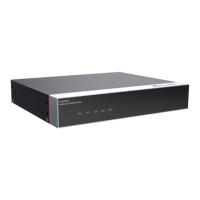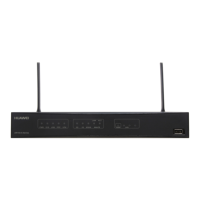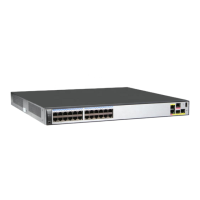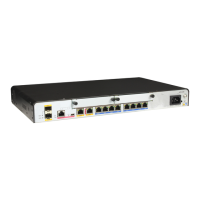convergence. RSTP is a refinement of STP and implements rapid convergence. In addition to
the preceding parameters, the link type, rapid transition mechanism, and maximum number of
sent BPDUs also affect STP/RSTP topology convergence.
Table 7-6 shows the STP/RSTP parameters that affect STP/RSTP topology convergence.
Table 7-6 Parameters affecting the STP/RSTP topology convergence
Paramete
r
Description Commands Remarks
System
parameter
Network
diameter, timer
values (Hello
timer, Forward
Delay timer,
Max Age
timer), and
timeout period
to wait for
BPDUs from
the upstream
device (3 x
Hello timer
value x Time
factor)
l stp bridge-diameter
diameter
l stp timer hello hello-time
l stp timer forward-delay
forward-delay
l stp timer max-age max-
age
l stp timer-factor factor
It is recommended that you
set the network diameter to
determine the timer value.
The switching device
automatically calculates
the Forward Delay period,
Hello time, and Max Age
time based on the network
diameter. Then, you can
run the stp timer-factor
factor command to set the
timeout period for waiting
for BPDUs from the
upstream (3 x Hello timer
value x Time factor).
Port
parameter
Link type of a
port
l stp point-to-point { auto |
force-false | force-true }
A P2P link helps
implement rapid
convergence.
l If the port works in full-
duplex mode, the link
connecting to the port is
a P2P link.
l If the port works in
half-duplex mode, you
can forcibly switch the
link connecting to the
port to a P2P link.
l In other cases, you can
enable the port to
automatically
determine whether to
connect to a P2P link.
Huawei AR3200 Series Enterprise Routers
Configuration Guide - LAN 7 STP/RSTP Configuration
Issue 02 (2012-03-30) Huawei Proprietary and Confidential
Copyright © Huawei Technologies Co., Ltd.
195

